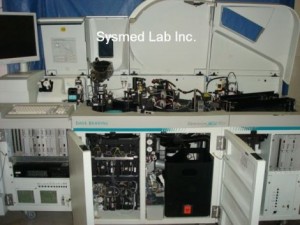Enzymatic Immunoassay (EIA) is a quick and indirect means of determining ethanol content. It’s original development was strictly for the purposes of a very quick determination of whether or not there was the possibility that there was ethanol in a patient. It was designed for the clinical emergency environment where we need a very quick method for purposes of treatment. It is a indirect measurement using a spectrophotometric device. It is very fast. It is not a specific test for ethanol and ethanol alone. We have blogged on this and other deficiencies of the EIA method before: WellSpan is to be commended, but why people who have been convicted for decades of a DUI should be upset
This is contrasted to the forensic environment. The forensic environment requires specificity for ethanol and requires a quantitative measurement that is as free from calibration and bias related error.

When one seeks to use hospital blood testing in its non-validated arena (the forensic courtroom arena), it can be an utter disaster. The broader legitimate scientific community has concluded enzymatic assay for EtOH quantitation is non-specific for EtOH and is not even meaningfully selective for EtOH to begin with. To devine quantitation in whole blood using that assay is an utterly silly scientific proposition. If you combine that with the difference in hematocrit that vary intersubject and even intrasubject, the notion of converting the raw EIA-based number to EtOH in whole blood is the functional equivalent to a total guess.
When attorneys press me to “convert” the EIA result to whole blood, I tell folks to please provide me the following:
- Client’s HCT/HT/PCV/erythrocyte volume
- Client’s LDH
- Client’s Myoglobin
- Color of the tube top
- Hold time of the sample
- Conditions the sample were held between collection and analysis
- Was TCA used in the sample preparation?
- Assurance that there is no other substances absent EtOH when (NAD converts to NADH) in the person’s body that absorbs at the 340nm or 540nm wavelength.
- The certificates of analysis (calibration and bias statement) for the standards used in the quality control (calibration efforts) of the analyzer
- The complete QC results and underlying data for the analyzer used.
If the answer is that they cannot provide or don’t know all of these variables, then the Government can’t possibly know them either. Any notion of conversion is just apocrypha.
When I talk with these attorneys, my point isn’t to be a jerk (although it may come across that way), it is just that we should not grant the government any sort of legitimacy in their process that is unscientific. Sure you can whip open Garriott’s Medical-Legal Aspects of Alcohol and see that they assert that the conversion should be 1.18. You can look at some of the research and come across Rainey to see an even bigger number of 1.49 to get to 3 sigma. But why do that? Why legitimize the illegitimate. If you read all of the studies, and research it and obsess over it and present about it to the scientific community like I do, you will see that there is no generally accepted scientific conversion factor.
It’s just bad. Here in central PA, they stopped. It was not an overnight process. Science in the long run is self-correcting. The other question is: “Is the law self-correcting in the long run?” The question is how long is the long run?


